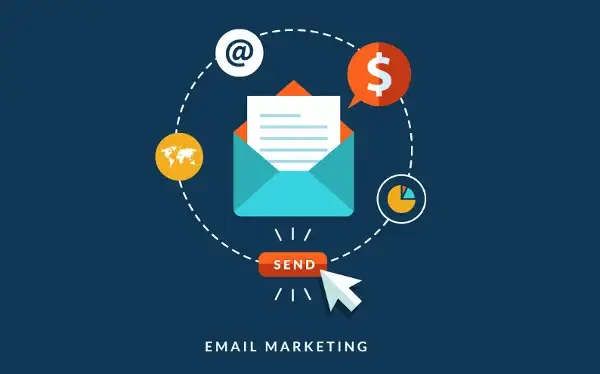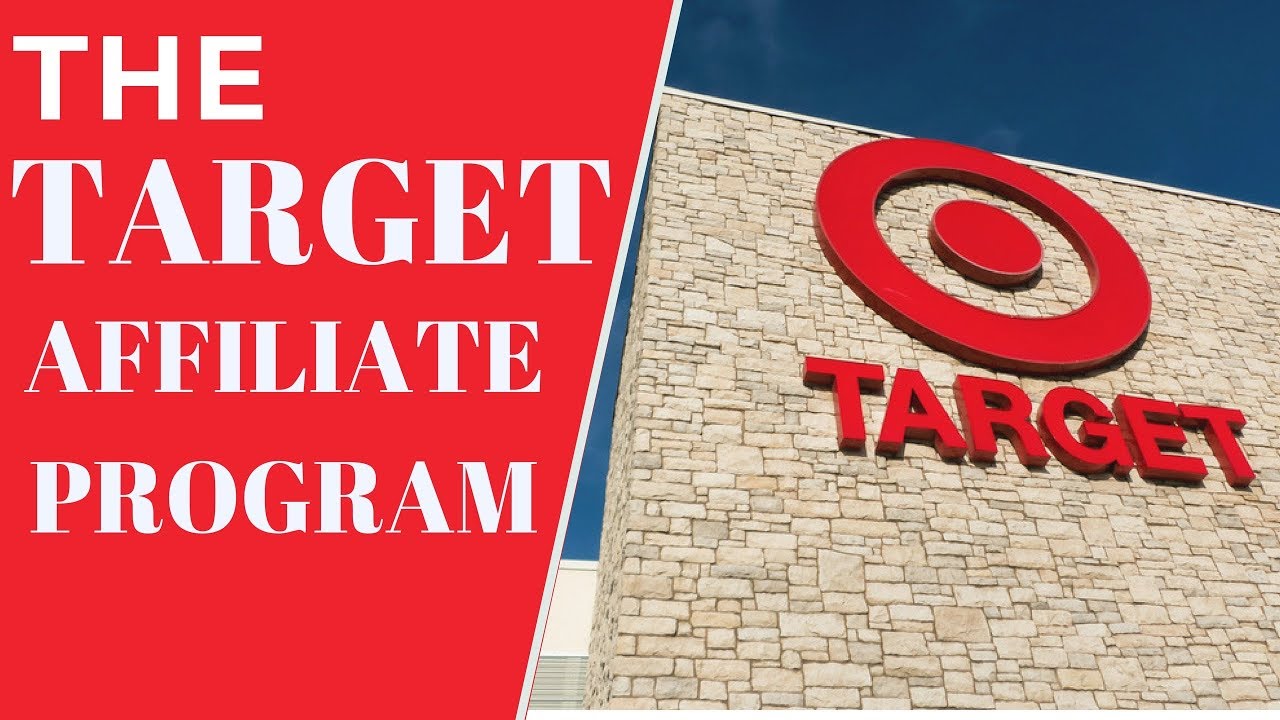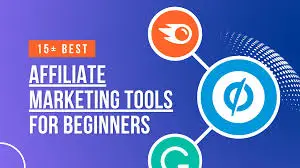Affiliate marketing has become an accessible and profitable way for individuals to earn income online. Many aspiring marketers often feel that they need a website to succeed, but the truth is, you can even start affiliate marketing with no money . By leveraging alternative platforms and strategies, you can begin generating income through affiliate marketing without investing in a website.
In this guide, we’ll walk you through how to start affiliate marketing without a website and highlight the essential steps to get you on the right track.
Steps to Start Affiliate Marketing
1. Choose a Niche
Choosing the best niche is the first and most critical step in affiliate marketing. Your niche defines the type of products you will promote, your target audience, and the platforms you’ll use. Without a website, this becomes even more important because you’ll need to narrow down your focus to make the most of the platforms available to you.

The best niche for you is one that aligns with both your interests and expertise. When you’re passionate about a topic, it’s easier to create content and engage with your audience. Plus, if you already have some knowledge or experience in a particular area, you’ll be able to provide valuable insights and recommendations, which builds trust with your followers.
Not all niches are equally profitable. It’s important to choose a niche that has a large audience and sufficient demand for affiliate products. For instance, niches like health and wellness, personal finance, and technology tend to offer high-paying affiliate programs. However, don’t just choose a niche based on its earning potential alone—make sure it’s something you can enjoy and sustain long-term.
Read on to learn about the best affiliate marketing niches and how to choose the right one for you.
2.Create and Optimize Content
Once you’ve chosen your niche, the next step is to create content that resonates with your audience. Since you don’t have a website, you’ll be using other platforms to share your content. The type of content you create will depend on where you choose to promote your affiliate links. Whether you’re using social media, forums, or email marketing, your goal should be to provide valuable, engaging content that naturally incorporates affiliate links.
For affiliate marketing without a website, you can focus on several types of content, such as blog posts, videos, social media posts, reviews, and how-to guides. Videos, in particular, are highly effective for engaging users and can be shared on platforms like YouTube, Instagram, and TikTok. If you prefer writing, long-form blog posts or product reviews can be shared in forums, email newsletters, or on social media platforms like Facebook and LinkedIn.
Regardless of the content format, it’s crucial that your content offers value. For example, if you’re promoting a fitness product, your content should educate your audience about how to improve their health or achieve their fitness goals. Offering practical advice and actionable tips makes your content more relatable and trustworthy, increasing the likelihood of affiliate conversions.
When creating content, make sure to optimize it for the platform you’re using. For instance, on Instagram or TikTok, short, engaging videos with clear calls-to-action work best. On Facebook or LinkedIn, posts with eye-catching images and thought-provoking questions can encourage engagement. Additionally, use relevant keywords and hashtags to help your content get discovered by the right audience.
3. Join Affiliate Programs
After creating content, the next step is to join affiliate programs that align with your niche. These programs allow you to promote products or services and earn a commission on sales made through your affiliate links. The key to success here is choosing the right affiliate programs that offer high-quality products and competitive commissions.
Discover the best affiliate programs for beginners without a website to get started.
There are countless affiliate programs available across various industries. To find the best ones for your niche, start by researching affiliate networks like Amazon Associates, ShareASale, ClickBank, or CJ Affiliate. These platforms connect marketers with companies offering affiliate opportunities. You can filter your search by niche to find programs that fit your content and audience.
It’s important to select products that are not only relevant to your audience but are also high in quality. Promoting subpar products can damage your credibility and hurt your affiliate sales in the long run. Look for programs that offer products with positive reviews, good customer support, and reputable brands. Your audience will appreciate your honest recommendations, and this will improve the chances of making successful sales.

Different affiliate programs offer different commission structures. Some pay a flat rate per sale, while others offer a percentage of each sale. Compare the commission rates, payment terms, and cookie durations (how long you get credit for a sale after someone clicks your affiliate link) to choose the programs that will provide the most value for your efforts. Consider joining programs that offer recurring commissions, such as subscription-based services, to build a more passive income stream.
4.Add Affiliate Links to Make Money
Now that you’ve chosen your niche and joined affiliate programs, it’s time to integrate affiliate links into your content to start earning commissions. The key to successfully adding affiliate links is ensuring that they fit naturally into your content and provide value to your audience.
The best way to incorporate affiliate links is to make them part of your content organically. For example, if you’re posting a product review or writing a tutorial, you can place affiliate links where they make sense within the context of the content. This way, your audience will be more likely to click on the links because they directly relate to the value you’re offering. Avoid overloading your content with links—keep them relevant and spread them out throughout your material.
Encouraging users to click your affiliate links requires clear and compelling calls-to-action (CTAs). Phrases like “Check out this product for better results” or “Click here to learn more” can motivate readers to take action. Be sure to use CTAs in a way that doesn’t feel overly sales-focused, but instead adds to the overall user experience by guiding them to the best solutions or products.
Where to Promote Affiliate Links
Promoting affiliate links is just as crucial as creating high-quality content. Without the right platforms to share your links, even the best content can go unnoticed. Fortunately, there are several effective places where you can promote affiliate links without needing a website. In this section, we’ll explore the best channels for sharing your affiliate links and growing your affiliate marketing business.
Social Media Apps
Social media platforms are one of the most powerful tools for promoting affiliate links, especially if you don’t have a website. These platforms offer built-in audiences and the ability to engage directly with followers.
Instagram: Instagram is ideal for promoting products with visually appealing content. You can use Instagram Stories, Reels, and Posts to share affiliate products. Make sure to use clear CTAs like “Swipe up to buy” or “Link in bio” (for posts) to drive traffic. Since Instagram is a highly visual platform, focus on creating aesthetically pleasing content that highlights the product benefits.

YouTube: If you enjoy creating video content, YouTube can be a highly effective platform for affiliate marketing. You can make product reviews, tutorials, or “how-to” videos and include affiliate links in your video descriptions. Be sure to include verbal or on-screen reminders to encourage viewers to check out the links in the description.

TikTok: TikTok’s short-form video content is great for quick, engaging product promotions. Create fun and informative videos about the products you’re promoting, and include your affiliate link in your bio or via TikTok’s Linktree-style feature. Use trending hashtags to increase visibility.
Emails and Newsletters
Email marketing is one of the most effective ways to promote affiliate links. With an email list, you have direct access to your audience, allowing you to share affiliate products with those who are most likely to be interested.
To get started with email marketing, you’ll need to build an email list. Offer a free resource, such as an eBook, guide, or checklist, in exchange for email sign-ups. Once you have a list of subscribers, you can send them regular emails with valuable content and affiliate offers.

Create engaging newsletters that offer tips, industry news, or product reviews related to your niche. Include affiliate links naturally in your content. To avoid coming across as too salesy, focus on providing value and only recommend products you truly believe will benefit your audience.
An email sequence is a series of automated emails sent to new subscribers. This is a great way to introduce your audience to your affiliate products over time. Use an email sequence to educate your subscribers on the benefits of a product or service and how it can solve their problems.
Email marketing helps nurture your relationship with your audience, making them more likely to trust your affiliate recommendations.
Conclusion
Affiliate marketing without a website is entirely possible, and with the right approach, it can be a highly rewarding venture. By following the steps outlined in this guide—choosing a profitable niche, creating valuable content, joining relevant affiliate programs, and strategically placing affiliate links—you can build a solid foundation for success. Additionally, promoting your affiliate links through social media, online communities, and email marketing will help you expand your reach and drive conversions, even without the need for a website.
The key to success in affiliate marketing without a website lies in understanding your audience, providing valuable content, and choosing the right platforms for promotion. With consistency and the right strategies, you can generate income through affiliate marketing without needing to invest in a website. By focusing on offering solutions to your audience’s needs, your affiliate marketing efforts will not only be more effective but also more sustainable in the long run.
Start small, stay focused, and keep refining your strategies—affiliate marketing without a website can open doors to financial freedom with the right mindset and approach.


